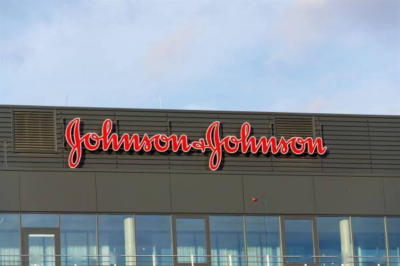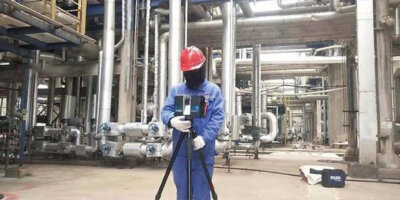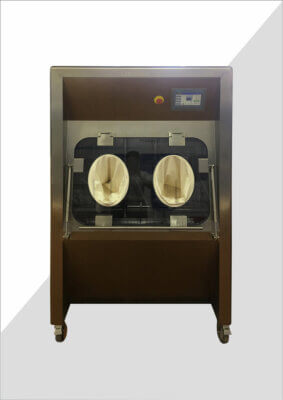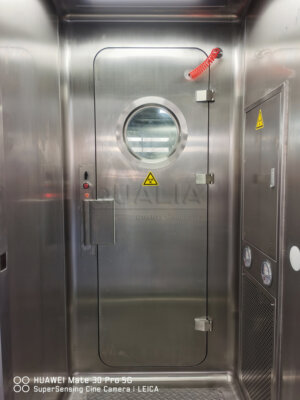In the realm of biosafety and waste management, the proper treatment of liquid waste from high-containment laboratories is of paramount importance. Effluent Decontamination Systems (EDS) play a crucial role in ensuring that potentially hazardous biological materials are rendered safe before being released into the environment. Among the various methods employed in EDS, chemical disinfection stands out as a highly effective and widely used approach for treating liquid waste.
This article delves into the intricacies of chemical disinfection methods specifically designed for liquid waste treatment in EDS. We'll explore the principles behind these techniques, the most commonly used chemicals, their effectiveness against different pathogens, and the considerations that must be taken into account when implementing these systems. From chlorination to advanced oxidation processes, we'll cover the spectrum of chemical treatments that ensure the safety of liquid effluents from high-risk laboratories.
As we transition into the main content, it's important to understand that the choice of chemical disinfection method can significantly impact the efficacy of the EDS and, by extension, the overall biosafety of the facility. The QUALIA Effluent Decontamination System exemplifies the integration of advanced chemical disinfection techniques in modern EDS solutions, ensuring the highest standards of safety and compliance.
Chemical disinfection in EDS is a critical process that employs specific chemicals to inactivate or destroy pathogenic microorganisms present in liquid waste, thereby preventing the release of potentially infectious agents into the environment.
| Disinfection Method | Primary Chemical Agent | Advantages | Disadvantages |
|---|---|---|---|
| Chlorination | Sodium Hypochlorite | Effective against wide range of pathogens, Residual protection | Potential for harmful byproducts |
| Peracetic Acid Treatment | Peracetic Acid | Rapid action, No harmful residuals | Higher cost, Potential corrosiveness |
| Ozonation | Ozone | Powerful oxidant, No chemical residue | High energy consumption, Complex system |
| Advanced Oxidation | Hydrogen Peroxide + UV | Effective against resistant pathogens | Equipment intensive, Higher operational cost |
What are the fundamental principles of chemical disinfection in EDS?
Chemical disinfection in Effluent Decontamination Systems is based on the principle of using reactive chemical agents to disrupt the cellular structures or metabolic processes of microorganisms. This process involves the careful selection and application of disinfectants that can effectively neutralize a wide range of pathogens present in liquid waste from high-containment laboratories.
The efficacy of chemical disinfection depends on various factors, including the type and concentration of the disinfectant, contact time, pH, temperature, and the nature of the target microorganisms. Understanding these principles is crucial for designing and implementing an effective EDS that can reliably decontaminate liquid waste before its release.
In practice, chemical disinfection in EDS typically involves a multi-step process that may include pre-treatment, primary disinfection, and post-treatment stages. Each stage is carefully controlled to ensure optimal conditions for the disinfectant to act effectively against the microbial contaminants.
The effectiveness of chemical disinfection in EDS is directly proportional to the concentration of the active agent and the duration of contact with the liquid waste, following the CT (Concentration x Time) concept widely used in water treatment.
| Factor | Impact on Disinfection |
|---|---|
| pH | Affects chemical reactivity |
| Temperature | Influences reaction rates |
| Organic Load | Can interfere with disinfectant |
| Turbidity | May shield microorganisms |
Which chemical agents are most commonly used in EDS for liquid waste treatment?
The choice of chemical agents for disinfection in EDS is critical to ensuring the complete inactivation of potentially harmful microorganisms. Several disinfectants have proven their efficacy in this context, with chlorine-based compounds, peracetic acid, and hydrogen peroxide being among the most widely used.
Chlorine-based disinfectants, particularly sodium hypochlorite, are favored for their broad-spectrum antimicrobial activity and cost-effectiveness. Peracetic acid has gained popularity due to its rapid action and decomposition into harmless byproducts. Hydrogen peroxide, especially when combined with UV irradiation in advanced oxidation processes, offers powerful disinfection capabilities against resistant pathogens.
Each of these chemical agents has its unique advantages and limitations, and the selection often depends on factors such as the types of microorganisms typically present in the waste, the volume of effluent to be treated, and the specific regulatory requirements applicable to the facility.
Sodium hypochlorite remains the most widely used chemical disinfectant in EDS due to its effectiveness against a broad range of pathogens and its ability to provide residual protection in the treated effluent.
| Disinfectant | Effective pH Range | Typical Dosage |
|---|---|---|
| Sodium Hypochlorite | 6.0 – 8.5 | 2-5 mg/L |
| Peracetic Acid | 3.0 – 7.5 | 0.5-2 mg/L |
| Hydrogen Peroxide | 3.0 – 8.5 | 10-30 mg/L |
How does the efficacy of chemical disinfection vary for different types of pathogens?
The effectiveness of chemical disinfection methods in EDS can vary significantly depending on the type of pathogen present in the liquid waste. Generally, chemical disinfectants are highly effective against vegetative bacteria and enveloped viruses but may require higher concentrations or longer contact times for more resistant organisms such as bacterial spores, protozoan cysts, and non-enveloped viruses.
Factors such as the cell wall composition, metabolic state, and inherent resistance mechanisms of different microorganisms play a crucial role in determining their susceptibility to chemical disinfectants. For instance, Mycobacteria and bacterial spores are known for their resistance to many common disinfectants, often requiring more aggressive treatment protocols.
Understanding these variations in efficacy is essential for designing robust EDS that can handle a wide spectrum of potential biological contaminants. It often necessitates a multi-barrier approach, combining different disinfection methods or using higher concentrations of chemicals to ensure comprehensive treatment.
Chemical disinfection efficacy follows a general hierarchy: vegetative bacteria < enveloped viruses < fungi < mycobacteria < non-enveloped viruses < bacterial spores, with increasing resistance to disinfection as you move through the list.
| Pathogen Type | Relative Resistance | Recommended Disinfectant |
|---|---|---|
| Vegetative Bacteria | Low | Chlorine, PAA, H2O2 |
| Enveloped Viruses | Low-Medium | Chlorine, PAA |
| Mycobacteria | High | PAA, Advanced Oxidation |
| Bacterial Spores | Very High | Chlorine Dioxide, AOP |
What are the key design considerations for implementing chemical disinfection in EDS?
Implementing chemical disinfection in an Effluent Decontamination System requires careful consideration of various design factors to ensure optimal performance and safety. The design must account for the expected volume and composition of the liquid waste, the types of pathogens likely to be present, and the regulatory requirements governing the release of treated effluents.
Key considerations include the selection of appropriate chemical storage and dosing systems, ensuring adequate mixing and contact time, and implementing robust monitoring and control mechanisms. The design should also incorporate safety features to prevent accidental release of untreated waste and to protect operators from exposure to hazardous chemicals.
Additionally, the system must be designed to handle variations in flow rates and contaminant loads, often necessitating the inclusion of buffer tanks and adaptive control systems. Compatibility of materials with the chosen disinfectants is another crucial factor, as some chemicals can be corrosive or reactive with certain materials.
Effective chemical disinfection in EDS requires a holistic design approach that integrates chemical dosing, contact chambers, monitoring systems, and safety features to ensure consistent and reliable treatment of liquid waste.
| Design Element | Purpose | Typical Features |
|---|---|---|
| Chemical Storage | Safe containment | Double-walled tanks, Ventilation |
| Dosing System | Precise chemical delivery | Metering pumps, Flow-paced control |
| Contact Chamber | Ensure adequate treatment | Baffles, Residence time control |
| Monitoring | Verify treatment efficacy | Online analyzers, Data logging |
How are the environmental impacts of chemical disinfection in EDS mitigated?
While chemical disinfection is highly effective in treating liquid waste, it's crucial to consider and mitigate potential environmental impacts associated with this process. The primary concerns include the formation of disinfection byproducts (DBPs), the release of residual chemicals, and the overall effect on the receiving water bodies.
Mitigation strategies often involve optimizing chemical dosages to minimize excess disinfectant, implementing dechlorination processes for chlorine-based systems, and utilizing advanced treatment technologies to reduce DBP formation. Some facilities are adopting more environmentally friendly disinfectants, such as peracetic acid, which breaks down into harmless byproducts.
Another important aspect is the careful management of chemical storage and handling to prevent accidental spills or releases. This includes implementing robust containment systems, regular maintenance checks, and comprehensive staff training programs.
The environmental impact of chemical disinfection in EDS can be significantly reduced through the use of advanced dosing controls, dechlorination processes, and the selection of disinfectants that produce minimal harmful byproducts.
| Environmental Concern | Mitigation Strategy | Benefit |
|---|---|---|
| Disinfection Byproducts | Advanced oxidation | Reduces DBP formation |
| Residual Chemicals | Dechlorination | Protects aquatic life |
| Chemical Spills | Containment systems | Prevents soil/water contamination |
What role does monitoring and validation play in ensuring the effectiveness of chemical disinfection in EDS?
Monitoring and validation are critical components in maintaining the efficacy and reliability of chemical disinfection processes in EDS. Continuous monitoring ensures that the system is operating within specified parameters, while periodic validation confirms that the treatment process is consistently achieving the required level of pathogen inactivation.
Key parameters typically monitored include disinfectant concentration, pH, temperature, and turbidity. Advanced systems may also incorporate online microbial analyzers to provide real-time data on treatment effectiveness. Validation often involves challenging the system with indicator organisms or surrogates to verify its performance under various conditions.
Regular monitoring and validation not only ensure compliance with regulatory requirements but also provide valuable data for optimizing the disinfection process, potentially leading to improved efficiency and reduced chemical consumption.
Continuous monitoring and periodic validation of chemical disinfection processes in EDS are essential for maintaining biosafety compliance and optimizing system performance, with many facilities now adopting real-time monitoring technologies for enhanced control.
| Monitoring Parameter | Typical Method | Frequency |
|---|---|---|
| Disinfectant Residual | Online analyzer | Continuous |
| pH | Online probe | Continuous |
| Microbial Indicators | Lab analysis | Daily/Weekly |
| System Validation | Challenge testing | Annually |
How are emerging technologies shaping the future of chemical disinfection in EDS?
The field of chemical disinfection for EDS is continuously evolving, with emerging technologies promising to enhance efficacy, efficiency, and environmental sustainability. Advanced oxidation processes (AOPs), which combine multiple oxidants or oxidants with UV radiation, are gaining traction for their ability to treat a wide range of contaminants and reduce the formation of harmful byproducts.
Nanotechnology is another area of innovation, with nanomaterials being explored for their potential to enhance disinfection efficacy or serve as novel disinfectants themselves. Smart dosing systems utilizing artificial intelligence and machine learning algorithms are being developed to optimize chemical usage and adapt to varying waste compositions in real-time.
Additionally, there's growing interest in electrochemical disinfection methods, which can generate disinfectants on-site, reducing the need for chemical storage and transportation. These emerging technologies hold the promise of more targeted, efficient, and environmentally friendly disinfection processes for EDS in the future.
Emerging technologies such as advanced oxidation processes and smart dosing systems are poised to revolutionize chemical disinfection in EDS, offering improved efficacy and reduced environmental impact compared to traditional methods.
| Emerging Technology | Advantage | Current Status |
|---|---|---|
| Advanced Oxidation | Reduced byproducts | Increasingly adopted |
| Nanotechnology | Enhanced efficacy | In research phase |
| AI-driven dosing | Optimized chemical use | Early implementation |
| Electrochemical systems | On-site generation | Pilot studies ongoing |
In conclusion, chemical disinfection methods play a crucial role in the effective treatment of liquid waste in Effluent Decontamination Systems. From traditional chlorination to advanced oxidation processes, these methods ensure that potentially hazardous biological materials are rendered safe before release into the environment. The selection and implementation of appropriate chemical disinfection techniques require careful consideration of factors such as efficacy against different pathogens, environmental impact, and regulatory compliance.
As we've explored, the field of chemical disinfection in EDS is dynamic, with ongoing advancements in technology and methodology continuously improving the effectiveness and efficiency of these systems. The integration of smart monitoring systems, the development of more environmentally friendly disinfectants, and the adoption of emerging technologies are shaping the future of liquid waste treatment in high-containment laboratories.
Ultimately, the goal of chemical disinfection in EDS remains constant: to provide a robust barrier against the release of potentially infectious agents while minimizing environmental impact. As research facilities and biosafety regulations evolve, so too will the methods and technologies employed in chemical disinfection, ensuring that EDS continue to play a vital role in safeguarding public health and the environment.
External Resources
Effluent Decontamination System – Wikipedia – This article provides a comprehensive overview of effluent decontamination systems, including chemical disinfection methods used to sterilize biologically active or biohazardous materials in liquid waste.
Effluent Decontamination systems – Belgian Biosafety Server – This document discusses various decontamination methods, including chemical treatment using oxidizing agents like sodium hypochlorite and peracetic acid, and their application in treating biologically contaminated liquid effluents.
The Design and Testing of a Continuous Effluent Sterilization System for Liquid Waste – Although this report focuses on continuous thermal sterilization, it also touches on the broader context of liquid waste treatment, including chemical disinfection methods as alternatives or complements to thermal processes.
Effluent Decontamination Systems (EDS): Annual Verification and General Maintenance – This document outlines the maintenance and verification procedures for EDS, including chemical treatment methods, and emphasizes the importance of biological validation and routine verification of these systems.
Wastewater Technology Fact Sheet – Disinfection for Small Systems – This fact sheet by the EPA discusses various disinfection methods, including chlorination, which is a common chemical disinfection method used in wastewater treatment, highlighting its advantages and disadvantages.
Chemical Disinfection of Wastewater – This article provides detailed information on chemical disinfection methods for wastewater, including the use of chlorine, ozone, and other disinfectants, and their effectiveness against various pathogens.
Chemical Disinfection in Water and Wastewater Treatment – This resource from ScienceDirect offers a comprehensive overview of chemical disinfection techniques in water and wastewater treatment, including their mechanisms, advantages, and limitations.
Guidelines for the Disinfection of Liquid Waste – The CDC provides guidelines and recommendations for the disinfection of liquid waste, which include chemical disinfection methods as part of broader biosafety protocols.
Related Contents:
- Effluent Decontamination: Essential for High-Risk Labs
- Efficient Effluent Decontamination: Key Components for Success
- Effluent Decontamination Systems: Safeguarding Malaysia’s Environment
- Effluent Decontamination: Ensuring Pharmaceutical Safety
- Continuous Effluent Decontamination: Protecting Our Environment
- Decontamination Systems: Safeguarding Health and Environment
- Effluent Decontamination Systems: Safeguarding Biosafety in Laboratories
- Effluent Decontamination Systems for Biosafety Laboratories
- Water Decontamination: Essential Methods for Clean, Safe Water






























